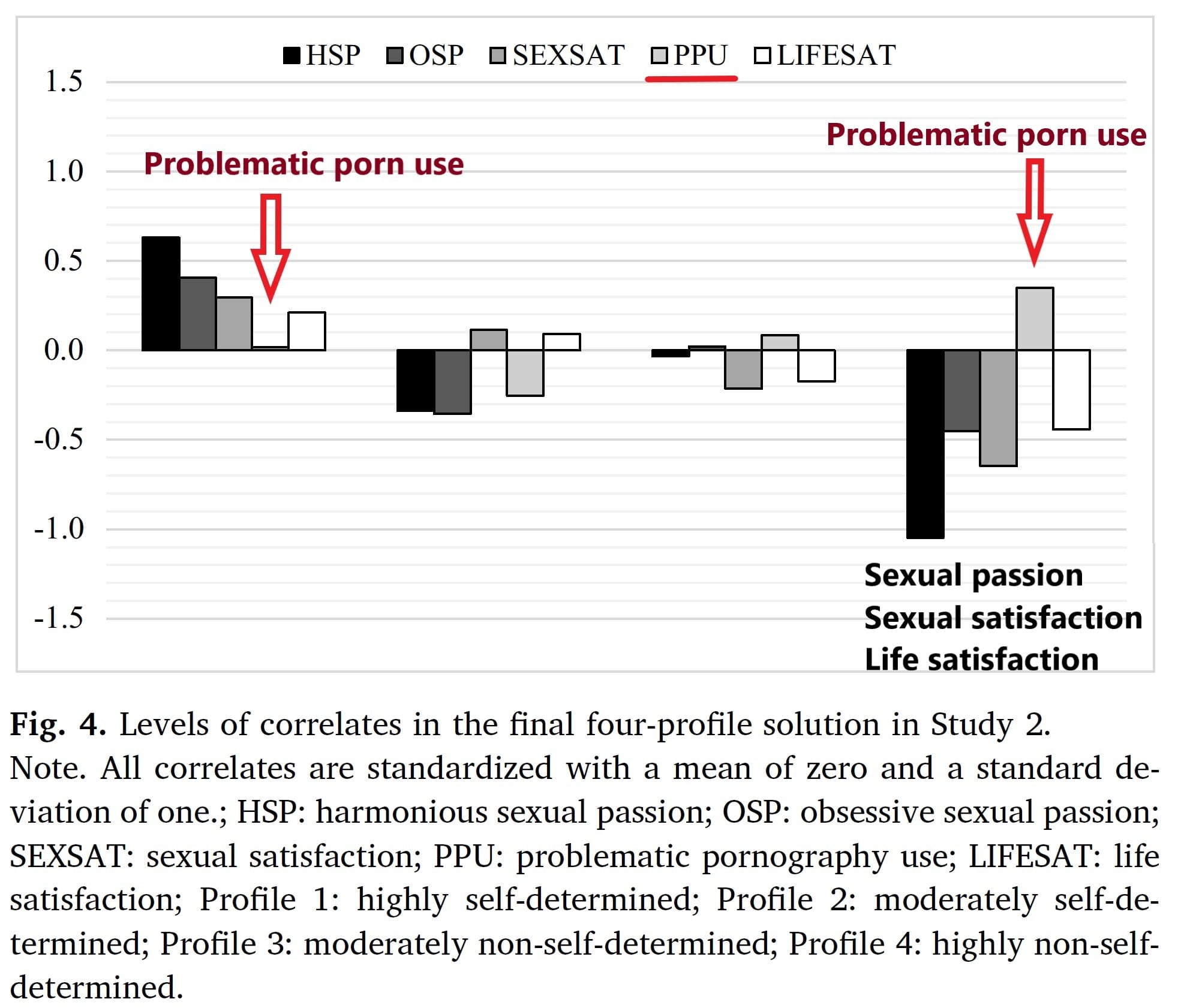COMMENTS: The write-up of this 2019 study leaves a lot to be desired. That said this figure #4 from the full paper reveals a lot: problematic porn use is strongly related to poorer scores on (1) harmonious sexual passion (HSP); (2) obsessive sexual passion (OSP); (3) sexual satisfaction (SEXSAT); (4) life satisfaction (LIFESAT). Simply put, problematic porn use was linked to far lower scores on sexual passion, sexual satisfaction & life satisfaction (group to the right). In comparison, the group that scored highest on all these measures had the least problematic porn use (group to left).

Abstract
Tóth-Király, István, Robert J. Vallerand, Beáta Bőthe, Adrien Rigó, and Gábor Orosz.
Personality and Individual Differences 146 (2019): 76-86.
According to self-determination theory, sexual motivations are cardinal in relation to sexual well-being and functioning. Despite that motivations are thought to occur in combination instead of separately, this proposition has not been explicitly tested in relation to sexual motivations. To address this issue, the present two-study investigation examined the simultaneous cooccurrence of multiple sexual motivations on distinct samples of young adults (N1 = 679, N2 = 632) using the novel latent profile analysis. To document the validity of the profiles and the positive and negative aspects of sexuality, theoretically-relevant correlates were also included from inside (sexual passion, sexual satisfaction, positive and negative emotions during sex) and outside (problematic pornography use and life satisfaction) the realm of partnered sexuality. Four highly similar profiles were identified across the two studies: (1) highly self-determined, (2) moderately self-determined, (3) moderately non-self-determined, and (4) highly non-self-determined. These profiles differed from one another on most, but not all, correlates with the more self-determined profiles being associated with more positive correlates. These results contribute to a better understanding of one’s underlying sexual motivations by highlighting the importance of simultaneously considering these motivations in regard to sexual well-being.
